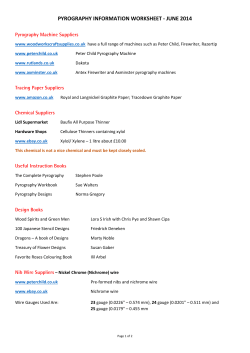
Document 204616
Polymer composites bipolar plates for PEFMCs : how to improve their performance and their durability? E. Planes1, L. Flandin, N. Alberola LEPMI UMR CNRS 5279 / LMOPS Grenoble INP - Universit´e Joseph Fourier - Universit´e de Savoie Campus Scientifique, Bat. IUT F73376 Le Bourget-du-Lac Cedex, France Introduction Materials Bipolar Plates (BPs) are the most significant part in PEFMCs. The standard material is graphite BUT alternative materials are considered to optimize the balance of required properties Polymers Carbon fillers[4] • Thermosetting resins : epoxy, phenolic and vinylester resins Key properties of BPs materials[1, 2, 3] : ,Low viscosity during process, High filler content /Use of solvent, Long cycle time (post-curing necessary) • High electrical conductivity • Thermoplastics : Polypropylene (PP), Poly(phenylene) sulfide (PPS), Liquid crystal polymer (LCP) • High thermal conductivity • Good mechanical properties ,Injection process → Short cycle time /Lower filler content, Properties dependent on the process conditions • To improve electrical properties : Graphite, Carbon nanotubes • To improve mechanical properties : Carbon fibers, Carbon nanotubes ⇒ Use of polymer composites, combining one or several conductive fillers to a polymer resin 1st way to improve the electrical properties : Increase the carbon filler content Carbon Polymer Composites* With one type of fillers[5, 6] Graphite filled Composites* Electrical properties depend on : • Type of fillers (,→ Gr) • Filler content (,→ the highest possible) nd 2 Decrease in flexural strength with an increasing graphite content ⇒ Difficult to couple high electrical and mechanical properties way to improve the electrical properties : Combination of several carbon fillers Combination of two fillers (d,D)[5, 6] Graphite - Carbon Black filled Composites* Addition of CB in the Graphite filled composites ⇒ Improvement of the electrical properties ⇒ Graphite - Carbon Black synergy Graphite - Carbone Fibers filled Composites* Addition of CF in the Graphite filled composites ⇒ Improvement of the mechanical properties ⇒ Use of mix of several carbon filler types (3) Ex : Graphite - Carbon Black - Carbon Fibers Acknowlegments Overview* • HYPLATE FUI Project financed by Feder, R´egion Rhˆone-Alpes • Special thanks to all industrial partners of this project : AD Majoris, Axane - Air Liquide, IDI, Nief Plastic • Electrical properties required by the application (DOE) are very often reached • CONTRARY to the mechanical properties ⇒ Use the combination of carbon fillers : Graphite - Carbon Black - Carbon fibers BUT sparsely studied in the litterature References [1] B. D. Cunningham, J. Huang, and D. G. Baird. Review of materials and processing methods used in the production of bipolar plates for fuel cells. Int. Mater. Rev., 52(1):1–13, JAN 2007. [2] A Hermann, T Chaudhuri, and P Spagnol. Bipolar plates for pem fuel cells: A review. Int. J. Hydrogen Energy, 30(12):1297–1302, SEP 2005. International Symposium On Solar-Hydrogen-Fuel Cell, Cancun, MEXICO, 2003. [3] JH Huang, DG Baird, and JE McGrath. Development of fuel cell bipolar plates from graphite filled wet-lay thermoplastic composite materials. J. Power Sources, 150:110–119, OCT 4 2005. [4] G Wypych. Handbook Of Fillers. Chem Tech Publishing, 1999. [5] Shen Chunhui, Pan Mu, and Yuan Runzhang. The effect of particle size gradation of conductive fillers on the conductivity and the flexural strength of composite bipolar plate. International Journal of Hydrogen Energy, 33(3):1035 – 1039, 2008. [6] SI Heo, JC Yun, KS Oh, and KS Han. Influence of particle size and shape on electrical and mechanical properties of graphite reinforced conductive polymer composites for the bipolar plate of pem fuel cells. Advanced Composite Materials, 15(1):115–126, 2006. 1 emilie.planes@univ-savoie.fr *Gr : Graphite, EG : Expanded Graphite, GNP : Graphite Nanoplatelets, CB : Carbon Black, CF : Carbon Fibers, CNT : Carbon Nanotubes
© Copyright 2025





















